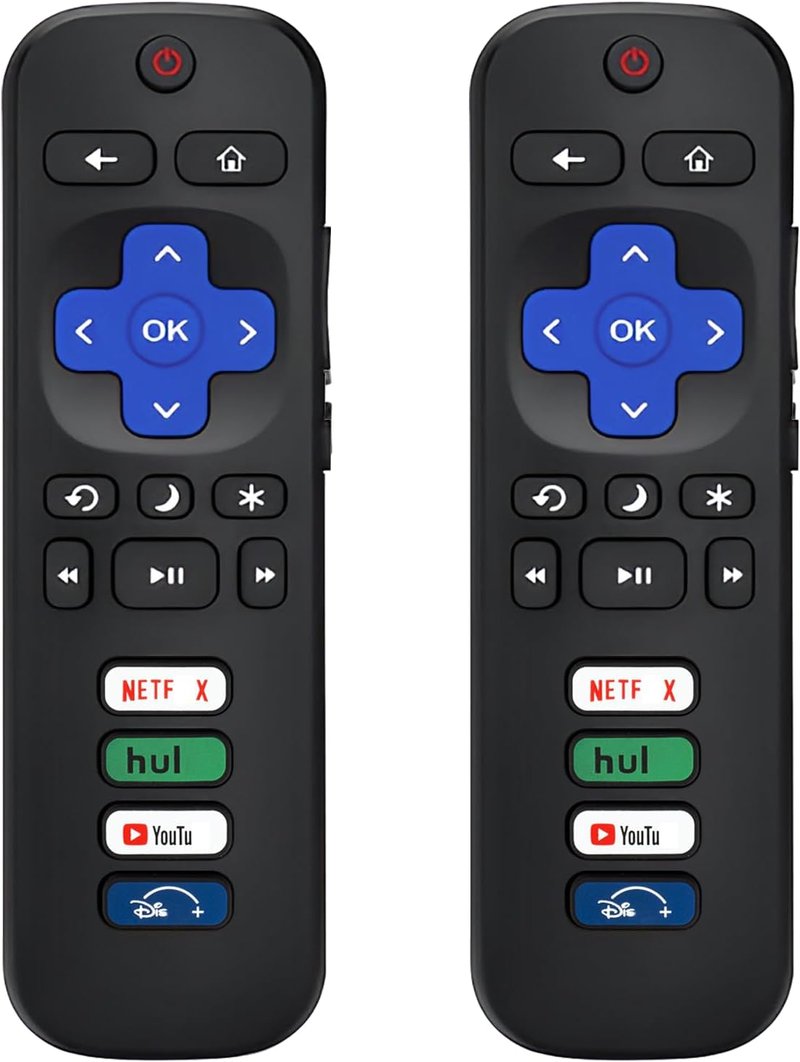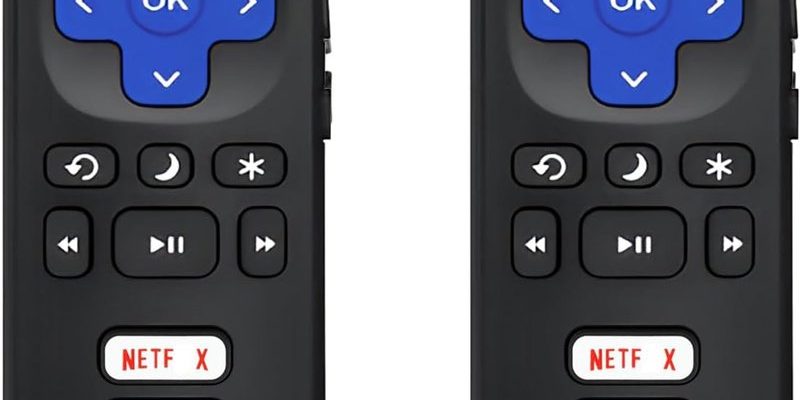
Honestly, it’s not always as simple as picking up any universal remote and expecting magic. TV tech can be picky. Roku TVs, with their unique interface and special remote codes, sometimes seem like they’re part of a secret club that only a few remotes can join. Here’s what you really need to know before pulling the trigger on a One For All universal remote for your Roku TV.
So, what even is a One For All remote? Picture those do-it-all gadgets from infomercials, but for your TV habits. One For All is a popular brand that makes universal remotes—meaning, one remote to rule them all. Instead of juggling three or four device-specific remotes, you flip between everything (TV, soundbar, Blu-ray player, maybe even a streaming device) with just one.
But not every universal remote is the same. Some are loaded with complex buttons and features, while others are stripped down to just the basics. One For All remotes usually work by letting you input a code specific to your device. This code tells the remote how to “talk” to different brands and models. If you lose the manual (we all do), you can usually find codes online. There’s also an auto-search feature, which kind of feels like the remote is scanning for alien signals until it finds your device.
Basically, One For All aims to replace lost, broken, or just plain annoying original remotes—like when your Roku TV remote stops responding (which, let’s be real, happens more than it should). The big question is: can it actually handle Roku TVs?
Here’s the thing about Roku TVs. While they might look like regular smart TVs, the way they handle remote signals is a bit different. Roku TVs use a unique set of IR (infrared) codes. Most original Roku remotes are built only for Roku devices—so you can’t just swap them willy-nilly with your old Vizio or Samsung remote.
Now, Roku streaming players (like the little stick you plug in) often use Wi-Fi Direct or Bluetooth remotes, which isn’t something most universal remotes can touch. But actual Roku TVs—like those made by TCL, Hisense, or Sharp—almost always support basic IR remote signals, which is what most universal remotes, including One For All, rely on.
But, and it’s a big but—just pointing your One For All universal remote at your Roku TV doesn’t guarantee instant results. You’ll need the correct remote code and sometimes a bit of patience in syncing or pairing. Plus, not every function (like launching Roku channels) may be supported. Think of it like getting a spare key cut: it’ll unlock the door, but maybe not open every drawer inside.
Let’s walk through what it actually takes to get a One For All remote working with your Roku TV. First, make sure your remote supports TV brands and specifically lists Roku TVs or popular Roku TV manufacturers (TCL, Hisense, etc.) in the manual.
Here’s how you usually set it up:
- Put fresh batteries in the remote. Seriously, weak batteries are the
- Find the Roku TV code in the One For All manual—or head to their website and use the code finder tool. Sometimes there are multiple codes for different models. Trial and error is pretty standard.
- Press and hold the setup button on the remote, then enter the code. The remote’s light usually blinks if you did it right.
- Test some basic functions: power, volume, mute, and input/source. If it works, amazing! If not, try the next available code.
- If it’s still moody, use the auto-search feature. Hold the setup button and let the remote cycle through codes until the TV reacts.
You might be wondering, “What if my remote just flashes at me and nothing works?” That’s where troubleshooting comes in. Sometimes, remotes need a reset—take the batteries out, wait a few minutes, and start again. Or, your Roku TV model might not be compatible. That’s rare, but it happens. If you’re stuck, customer support (yes, the real humans) can walk you through advanced pairing methods.
What Features Work—and What Doesn’t
This is where expectations meet reality. When you connect a One For All remote to your Roku TV, you’ll almost always get the basics: power on/off, volume up/down, mute, and input selection. Basically, it does what you need for everyday TV watching.
But, let’s keep it real. Most universal remotes won’t give you the special Roku buttons—like instantly launching Netflix or scrolling through Roku’s menu with slick precision. Why? Those buttons use custom Roku codes that aren’t always included in generic remote databases.
You can usually use the arrow keys, OK/select, and maybe even the Home button, but advanced stuff like private listening, voice search, or opening the Roku Channel Store probably won’t work. If you use those features daily, you might miss them on your universal remote. It’s a bit like driving an automatic car after years with a stick shift—mostly smooth, but something just feels different.
Some One For All remotes with learning capabilities let you “teach” functions from your original Roku remote—assuming you still have it. But not every model offers this, and setting it up can feel like programming a VCR in the 90s. If that sentence made your eye twitch, you’re not alone.
Comparing Universal Remotes vs. Roku-Brand Remotes
You might be thinking, why bother with a universal remote at all? Here’s a quick comparison to help decide what’s right for you:
| Universal Remote (like One For All) | Roku Brand Remote |
|
|
The decision really comes down to whether you need “just the basics” or all the extra Roku features. If you’re constantly swapping between TV brands or fiddling with sound systems, a universal remote brings sanity. If you’d rather not miss out on Roku’s unique features, a brand remote might be worth the search.
Common Problems and Troubleshooting Tips
No tech adventure is complete without hitting a few bumps. Here are some real-world hiccups and how to handle them:
- Remote won’t pair or sync: Double-check you’re using the correct Roku TV code. Go through the code list again or try auto-search mode.
- Some buttons don’t work: This can be normal with universal remotes. If it’s non-negotiable features (like input or volume), try a different code—sometimes one code covers more functions than another.
- Remote stops working after a week: Weak batteries, people! Swap them out. Also, check for stuck buttons or clean the IR sensor on your TV.
- TV doesn’t turn on: Some TVs need the original remote to wake from deep sleep. Use the power button on the TV (yes, it exists, usually hidden underneath) then re-test the remote.
- Just nothing works: There’s always the chance your One For All model isn’t compatible with your exact Roku TV (or vice versa). Try a different universal remote brand, or spring for a Roku-branded remote as a backup.
Pro tip: Keep your old remotes (even the broken ones) for code learning or emergencies. You never know when you’ll need to play TV MacGyver.
Alternatives to One For All Remotes
If you’ve tried One For All and it’s just not clicking, you do have other options. Other universal remote brands like GE, RCA, or Philips sometimes offer better compatibility with Roku TVs. Some, like Logitech Harmony (if you can still find one), offer advanced programming and can control nearly anything in your setup, from smart lights to streaming devices.
There’s also the option of using your smartphone. Roku’s mobile app is surprisingly solid as a virtual remote, with support for private listening and voice search. Downsides? It eats phone battery and isn’t as nice as the real thing when you’re half-asleep and can’t remember your passcode.
Of course, you can always order a replacement Roku-brand remote. It’s the safest bet for full feature access, but usually means another remote in your collection. It’s a classic trade-off: the convenience of all-in-one or the comfort of full compatibility.
Final Thoughts: Is One For All the Fix for Roku TV Owners?
Here’s what it all comes down to: Yes, most One For All universal remotes are compatible with Roku TVs, but expect a few quirks. You’ll get the core functions—power, volume, inputs, and some navigation—but not every advanced Roku feature will be at your fingertips. For basic living room peace, a One For All remote is a life-saver, especially if you’re always misplacing the original or need to control several devices at once.
Just remember, remote setup sometimes takes patience, a little code hunting, and good batteries. If you’re someone who loves every Roku shortcut and special command, you might want to keep a real Roku remote handy. But if you just want to turn on your TV and watch without digging through a pile of remotes, One For All might just be your new best friend.
So go ahead, give it a try—just check those sofa cushions first. Who knows, maybe your old remote’s hiding there after all.
